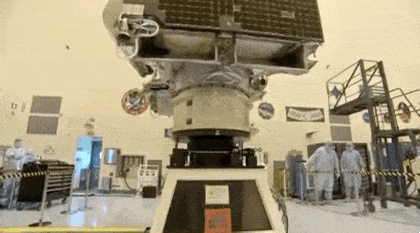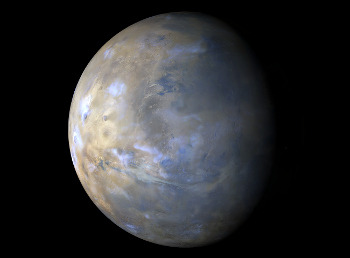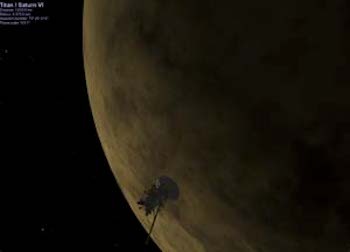Milky Way Over Provence, France

Milky Way over Provence, France
js
More Posts from Thestarblaster-blog and Others

Dumbbell Nebula
js








If there is magic on this planet, it is contained in water :D

NGC 6888: The Crescent Nebula by Michael Miller, Jimmy Walker
Solar System: Things to Know This Week
Our solar system is huge, let us break it down for you. Here are a few things to know this week:
1. Juno Eyes on Jupiter

After a journey of more than five years, the Juno spacecraft is ready for its detailed look at Jupiter—arrival date: July 4. Using Eyes on the Solar System and data from the Juno flight team, you can take a virtual ride onboard the spacecraft in the “Eyes on Juno” simulation.
2. Taking a Spacecraft for a Spin

Preparations for the launch of the OSIRIS-REx asteroid mission are spinning up, literally. Here, the spacecraft can be seen rotating on a spin table during a weight and center of gravity verification test at our Kennedy Space Center. Liftoff is scheduled for Sept. 8. This spacecraft will travel to a near-Earth asteroid called Bennu and bring a small sample back to Earth for study.
3. Long-Range (Or at Least Long-Distance) Weather Report

Our Mars Reconnaissance Orbiter acquires a global view of the red planet and its weather every day. Last week, dust storms continued along the south polar ice cap edge. Northern portions of Sirenum, Solis, and Noachis also experienced some local dust-lifting activity. A large dust storm propagated eastward over the plains of Arcadia at the beginning of the week, but subsided just a few days later over Acidalia.
4. Hello from the Dark Side

The New Horizons spacecraft took this stunning image of Pluto only a few minutes after closest approach in July 2015, with the sun on the other side of Pluto. Sunlight filters through Pluto’s complex atmospheric haze layers. Looking back at Pluto with images like this gives New Horizons scientists information about Pluto’s hazes and surface properties that they can’t get from images taken on approach.
5. A Titanic Encounter

On June 7, our Cassini orbiter will fly very close by Saturn’s giant, haze-shrouded moon Titan. Among the targets of its observations will be the edge of the vortex that swirls in Titan’s thick atmosphere near its south pole.
Want to learn more? Read our full list of the 10 things to know this week about the solar system HERE.
Make sure to follow us on Tumblr for your regular dose of space: http://nasa.tumblr.com

The Cone Nebula from Hubble
js

laundry boys
Sleepless Wolf Report
Hi guys!
Do you know the feeling when your body tells you that you need to sleep, but your brain are restless?
My head is aching from all the nights I haven’t being sleeping well. I’m feeling anxious about my mother who is in a hospital again, luckily it’s not anything too bad. I’m also restless because I’m moving to a new apartment soon. I need to find a job to have my bills payed and have some money to spend after. I know I’m not alone with these kind of problems, but I have none to speak with, so I write them down to ease my brain. I could use them to so many more fascinating things than anxiety and mental breakdowns in the middle of the night.
StarBlaster signing out

A group of Scandinavians built a replica of a Viking ship from scratch using only technology that would have been available at the time, then set sail from Norway to the US to prove the Vikings could have easily made the trip 500 years before Columbus did. Source Source 2 Source 3


Getting Closer to the Core at Pepacton Resevoir, NY
js
Why Are We Ticklish?
A new study from Humboldt-Universität zu Berlin has found how “ticklishness” is represented in the rat brain. The study has been published on 11th November 2016 in Science.
Of all physical sensations, ticklishness is perhaps the most mysterious. Why do we laugh in response to tickling? Why are certain body parts more ticklish? Why cannot we tickle ourselves? Indeed, the mystery of ticklish perception has been discussed for more than two millennia by great intellectuals including Aristotle and Charles Darwin. Despite such long-standing interest, the mechanism of ticklishness remained elusive.
The new study investigated tickling in rats. Earlier work had shown that young rats respond with 50 kHz ultrasonic “laughter-calls” to tickling by humans. In the novel study rats also reacted enthusiastically to the tickling: they emitted numerous calls. As judged by their calls, rats were most ticklish on the belly and underneath their feet. Rats often performed unsolicited joy jumps (Freudensprünge) after tickling, a behavior that can be seen in joyful subjects in various mammalian species. Rats also played with the researcher’s hand and chased it, and emitted similar calls during play.
“Neural correlates of ticklishness in the rat somatosensory cortex” by S. Ishiyama and M. Brecht in Science. Published online November 11 2016 doi:10.1126/science.aah5114
-
 toysforthestateofexception liked this · 1 year ago
toysforthestateofexception liked this · 1 year ago -
 sj-stars reblogged this · 4 years ago
sj-stars reblogged this · 4 years ago -
 moonknightisabossassbitch-blog reblogged this · 6 years ago
moonknightisabossassbitch-blog reblogged this · 6 years ago -
 stablerock liked this · 6 years ago
stablerock liked this · 6 years ago -
 jairosa42 liked this · 6 years ago
jairosa42 liked this · 6 years ago -
 jeebssred liked this · 6 years ago
jeebssred liked this · 6 years ago -
 16fahri liked this · 6 years ago
16fahri liked this · 6 years ago -
 the-other-acxb reblogged this · 6 years ago
the-other-acxb reblogged this · 6 years ago -
 cosmic-ricochet liked this · 6 years ago
cosmic-ricochet liked this · 6 years ago -
 moonknightisabossassbitch-blog liked this · 6 years ago
moonknightisabossassbitch-blog liked this · 6 years ago -
 smallfryingpan liked this · 6 years ago
smallfryingpan liked this · 6 years ago -
 fagdykefrank liked this · 6 years ago
fagdykefrank liked this · 6 years ago -
 thunderapache-blog liked this · 6 years ago
thunderapache-blog liked this · 6 years ago -
 daemondamian liked this · 6 years ago
daemondamian liked this · 6 years ago -
 dbdude334 liked this · 6 years ago
dbdude334 liked this · 6 years ago -
 praphae liked this · 6 years ago
praphae liked this · 6 years ago
Here I have things and stuff I like. I'm 18 years old pup who loves space and sciece. You may find some fascinating things here.
41 posts